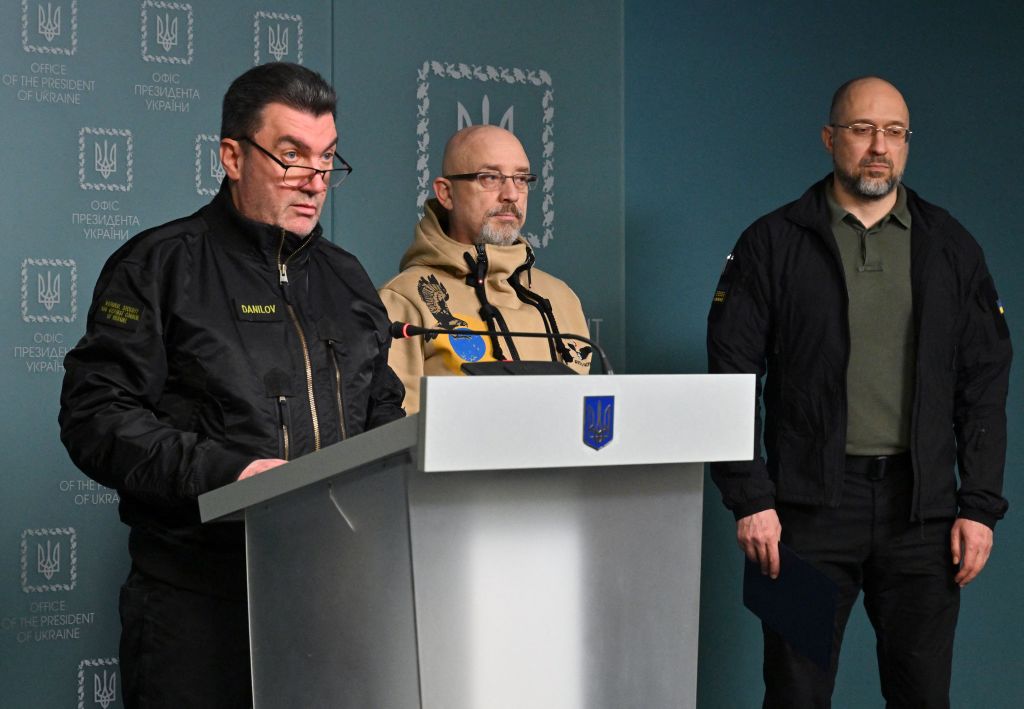
As Russian missiles and airstrikes rain down on Ukraine—damaging up to 40% of the its infrastructure in the past month—the country may soon be able to better defend against the growing barrage of attacks thanks to new weapons deliveries from Western allies.
On Monday, Ukraine received its first NASAMS air defense systems from the U.S. and Aspide units from Spain. As the military assistance packages arrived, Oleksiy Reznikov, Ukraine’s defense minister, tweeted: “Look who’s here! NASAMS and Aspide air defence systems arrived in Ukraine! These weapons will significantly strengthen #UAarmy and will make our skies safer. We will continue to shoot down the enemy targets attacking us.”
Monday’s deliveries come weeks after Ukraine received its first of four Iris-T air defense systems from Germany, the first such advanced weaponry Kyiv received since the war began.
More from TIME
Last week, President Volodymyr Zelensky had asked the leaders of G7 nations for more help with air defense, following additional Russian missiles and airstrikes. Zelensky said they must do “everything possible and impossible” to protect the Ukrainian sky.
Below, what to know about the new weapons systems, and why they matter.
How do NASAMS defense systems and Aspide units work?
NASAMS, or National Advanced Surface-to-Air Missile Systems, are medium-range air defense systems that can identify, engage, and destroy aircraft, helicopters, cruise missiles, and unmanned aerial vehicles. They also protect valuable military assets or mass population centers.
“They detect the threat, identify that it is a threat-as opposed to an aircraft or something like that-then it would launch the missile,” says Tom Karako, director of the Center for Strategic and International Studies think tank’s Missile Defense Project.
NASAMS were developed in the 1990s by Raytheon, a U.S defense conglomerate, in tandem with Kongsberg, a Norwegian defense and aerospace firm. The systems have been deployed to protect Washington, D.C. from aerial threats since 2005.
Meanwhile, Aspide is a medium-range air-to-air and surface-to-air missile system. It was produced by Italian company Selenia in the 1970s, primarily for the Italian Armed Forces. In September, Spain trained 20 Ukrainian military personnel on how to use Aspide. In November, a further 400 Ukrainian soldiers will arrive in Spain to be trained at the Infantry Academy in Toledo.
“It’s not just about the very specific characteristics of a particular missile or a particular system. But this is about adding to the overall Ukrainian capacity for defense,” Karako says of the military assistance Ukraine is receiving.
How can these defense systems protect Ukrainian infrastructure?
While these systems are effective and reliable, Karako says the defended area covered by NASAMS and Aspides will be “rather modest” and a handful of launchers can’t defend the whole of Ukraine. This means the systems are best placed to defend specific targets of elevated personal and financial value.
“What I would say is that every bit helps and air defense is one of Ukraine’s highest priorities for defense, and they need not merely more launchers but lots more rounds for them. This is what has held Russian air superiority at bay,” says Karako.
According to a report published on Monday by RUSI, a British security and defense think tank, Ukrainian air defenses are currently shooting down the majority of Iranian-made Shahed-136 “kamikaze drones” and around half of Russia’s cruise missiles by using surface-to-air missiles, fighter aircrafts with air-to-air missiles, portable rocket launchers known as MANPADS, and anti-aircraft guns. But enough drones and missiles have made it past Ukraine’s defenses to wreak havoc on the country’s infrastructure, leaving millions in blackouts without running water or electricity.
If NATO member states continue to provide military assistance in the form of ammunition and launchers, Ukraine will be able to protect remaining electricity infrastructure and repair work, the report added. “With rolling blackouts already affecting much of the country and the weather already getting cold, the urgency of these requirements is hard to overstate.”
But some Western nations have been cautious about providing Ukraine with such powerful weapons due to a fear of provoking President Vladimir Putin into drastic action.
Read More: The Risk of Nuclear War is Now a Daily Issue for the Biden Administration
What could happen if Ukraine loses control of its skies?
The RUSI report concludes that Ukraine’s defenses have so far prevented Russia from razing cities to the level of destruction seen in Syria, after Putin formally intervened in the country’s civil war in 2015 to prop up the regime of Bashar al-Assad.
Sergei Surovikin—nicknamed “General Armageddon”—commands the war in Ukraine. He also oversaw Russia’s intense aerial bombardment of Syrian cities like Aleppo.
But the RUSI report warned that Ukraine could run out of air defense weapons, and that continued supplies will be needed. “The West must avoid complacency about the need to urgently bolster Ukrainian air-defence capacity,” RUSI’s report said.
More Must-Reads from TIME
- Cybersecurity Experts Are Sounding the Alarm on DOGE
- Meet the 2025 Women of the Year
- The Harsh Truth About Disability Inclusion
- Why Do More Young Adults Have Cancer?
- Colman Domingo Leads With Radical Love
- How to Get Better at Doing Things Alone
- Michelle Zauner Stares Down the Darkness
Write to Armani Syed at armani.syed@time.com